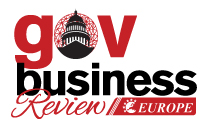Thank you for Subscribing to Gov Business Review Weekly Brief
Public Affairs' Effect on Local Governance
An effective public affairs strategy is essential for local councils, fostering lasting relationships and influence.

By
Gov Business Review | Friday, October 17, 2025
Stay ahead of the industry with exclusive feature stories on the top companies, expert insights and the latest news delivered straight to your inbox. Subscribe today.
FREMONT, CA: A robust public affairs strategy is a key pillar for local governments, enabling them to create persistent partnerships that transcend personnel changes and unleash sustained success. It emphasizes the mutually beneficial relationship between skillful leadership and successful public affairs tactics. The term "public affairs" describes how a company cultivates and maintains connections with important stakeholders, especially those in politics and government. It codifies and simplifies the essential networking activities that local leaders do, including contacts with local MPs, community leaders, Whitehall representatives, industry leaders, the media, think tank consultations, and policy stakeholders.
In the corporate sphere, large private sector entities recognize the pivotal role of public affairs strategies, allocating ample resources to this function, making it an integral part of their operations. In contrast, within local government and other public service providers, such as health trusts, the concept of a designated public affairs lead is relatively scarce.
The apparent ubiquity of public affairs activities in the modus operandi of councils may lead to the misconception that a formal public affairs strategy is redundant. Indeed, there are noteworthy achievements in public sector organizations at the local level, all attained without formalizing a public affairs strategy.
While a leader is not an absolute prerequisite for public affairs success in local public service providers, a well-defined strategy becomes imperative in their absence. Some local leaders prioritize the operational aspects of their organization over networking and external relationship-building, a legitimate focus depending on the circumstances. In such cases, the organization necessitates a team-centric approach to public affairs. Establishing robust relationships between leaders and managers across different echelons may prove more sustainable in the long run than relying solely on a handful of relationships at the highest level.
Formalizing a public affairs strategy offers several advantages. It encourages reflection on crucial questions that enhance the efficacy and sustainability of your influencing endeavors over time. Effective networks and relationships thrive when they align with a common purpose and shared objectives. The prevalence of collaborative efforts and partnerships in delivering local public services presents ample opportunities for joint public affairs initiatives. Campaigns to secure investment for major infrastructure projects benefit significantly from a partnership involving public service leaders, local universities, airports, and major businesses.
A public affairs strategy offers a structured framework for sustained engagement and advocacy. Projects with long-term objectives, such as constructing a new bridge airport or reopening a tube station, often span many years, if not decades. These endeavors must focus on more than just a few relationships, even if held by leaders. They must endure significant political and economic shifts while remaining steadfast in pursuing their objectives. Success in these cases hinges on gradual growth, involving more supporters, partners, and advocates, culminating in the realization of the project.
Strategic communications, a part of public affairs, transcends the domain of the communications team or hierarchical delegation from a press office to senior leadership. It necessitates a symbiotic partnership between communication professionals who facilitate seamless communication, including public affairs and organizational leaders. The latter should actively contribute to strategy development, play a direct role in execution, and collectively assume responsibility for the complex, nuanced, and influential leadership demanded in contemporary times.
More in News






